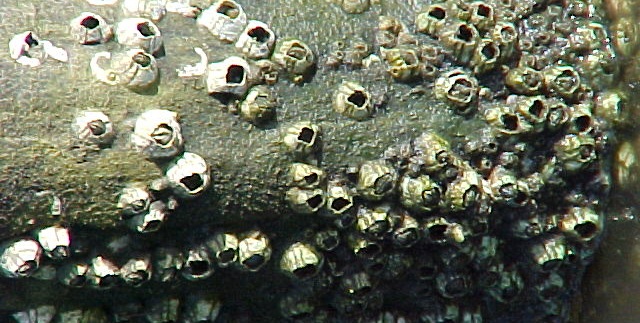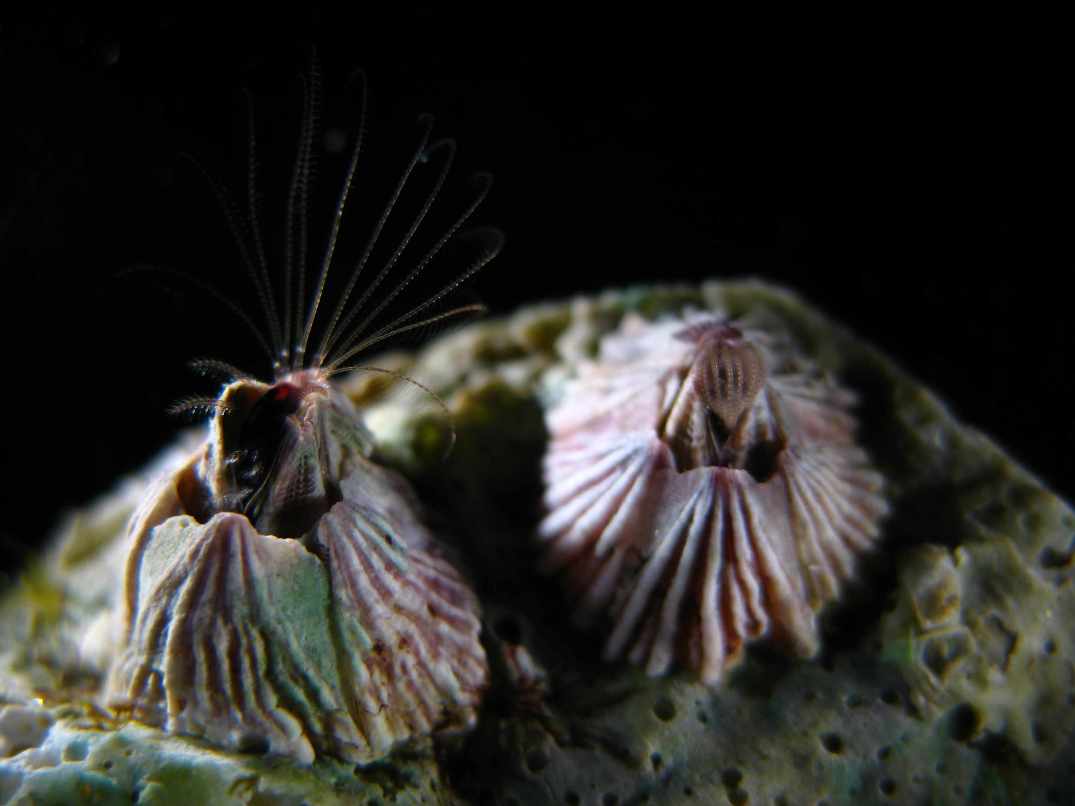Nutrition
Barnacle feeding is not very complex
or diverse in terms of strategies for acquiring food. Some
species of barnacles are actually parasites and live off the
bloods of others. They, however, do not have calcium carbonate
plates or feeding structures called cirri. The cirri are
feathery-like and move in a way that draws water into the shell
allowing the barnacle to feed (Tschanz 2012).
Chthamalus
fragilis, like most other barnacles, feeds by filter
feeding. When the tides reach and encompass the barnacle, it
opens the two plates covering its aperture opening (main opening
at the top). Once those are open, the cirri, also known as the
thoracic appendages, stretch into the water (EOL 2010). It tends
to live in areas with stronger currents or live on motile
animals, so the maximum amount of prey can pass over its thoracic
appendages. The main source of nutrition for
C. fragilis is
plankton, but they can also eat algae or bacteria if necessary.
During the winter it does not feed. Instead, it relies on
food reserves (A-Z Animals 2013).
Cirral activity while feeding can be based on a variety of
factors including: size, age, and temperature. Rhythmic cirral
beating is directly proportional to temperature and inversely
proportional to age and size (Southward and Anderson n.d.). In other
words, as size and age increase then cirral beating decreases. As
temperature increases, so does cirral beating. This is mostly
because when the water temperatures are warm,
Chthamalus fragilis is
more active than when the water temperatures are cold. The faster
the rhythmic beating, the more plankton and
other microorganisms barnacles can capture. However, this does take more energy. The cirri
of C. fragilis are more
active and upright while feeding than other species of barnacles;
whose cirri have a primitive cup-shaped structure. This difference
gives them a slight advantage in filtration (Southward and Anderson
n.d.).
Another example of organisms that filter feed are the sponges. If you would like to learn about sponges, click on the link!
Southward, A. J. and D.T. Anderson. N.d. Cirral activity of
barnacles. Barnacle Biology 5: 135-136.
EOL 2010. <URL:
http://eol.org/pages/336009/details>.
Accessed 21 March 2014.
A-Z Animals 2013. <URL:
http://a-z-animals.com/animals/barnacle/>.
Accessed 21 March 2014.
Tschanz, G. 2012. Pollicipies
polymerus. BioWeb <URL:
http://bioweb.uwlax.edu/bio203/s2012/tschanz_garr/classification.htm>.
Accessed 21 March 2014.
Home | Classification | Habitat | Adaptation | Reproduction | Interactions | Facts | References
| Contact Us |

